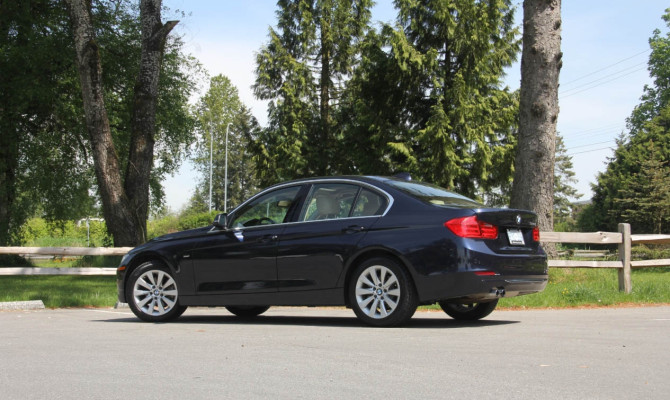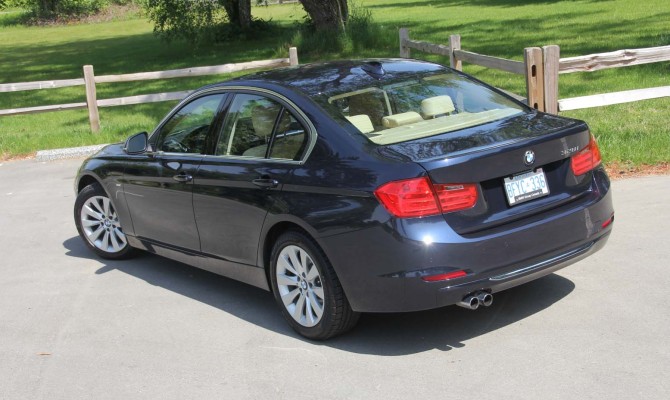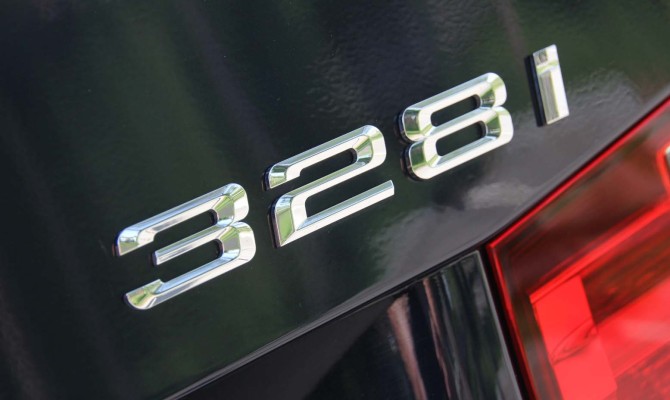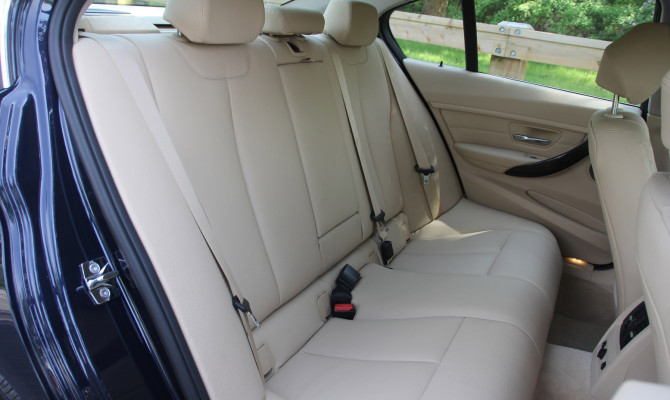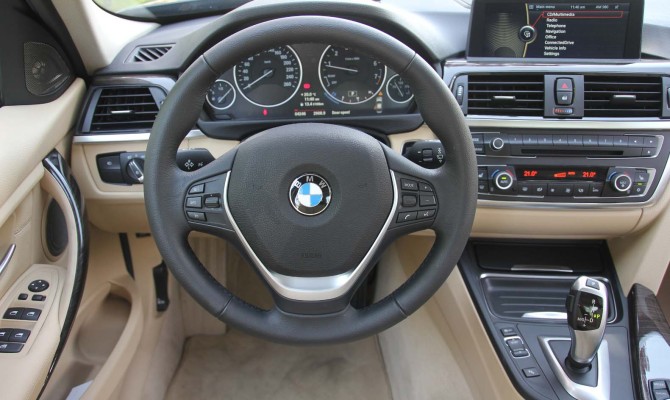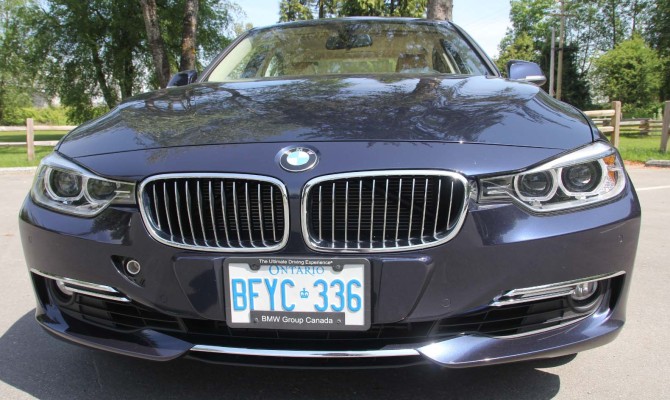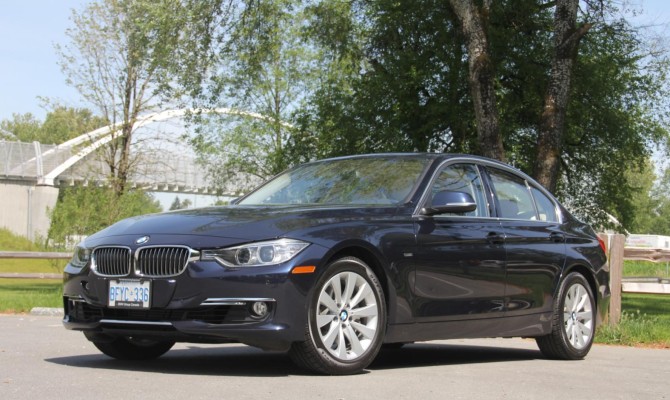Most buyers are attracted to a 3 Series because it’s simply a great car to drive…
The compact 3 Series sedan is the definitive BMW and the most popular car made by the Bavarian Motor Works.
The 5th generation (2006 to 2011) of the 3 Series line had, by 2010, expanded to include Touring (wagon), 2-door coupe and Cabriolet (convertible) editions, in addition to the sedan, which is internally know as the E90.
Primarily a rear-drive vehicle with an in-line six cylinder engine up front, the 2010 sedan came as a 323i (2.5-litre), 328i (3.0-litre), 335i (twin-turbo 3.0-litre) and 335d, with a twin-turbo 3.0-litre diesel engine. All-wheel-drive sedan editions, with the x-Drive system, were the 328i xDrive and the 335i xDrive. There’s also an ultra high-performance and pricey M3 edition, with 4.0-litre V8 engine.
A six-speed manual came standard and is a popular transmission with 3 Series buyers. The automatic option was either a conventional six-speed (with a manual mode) or a seven-speed dual-clutch gearbox.
Moving ahead, the 2011 model year 3 Series came with a minor exterior refresh that included new headlight units with LED signals, modified front and rear bumpers and air intakes, and new taillights with LED technology. Under-hood it also came with new TwinPower Turbo technology on a revised 3.0-litre engine.
An all-new sixth generation BMW 3 Series sedan (know internally as the F30) was introduced for the 2012 model year. Longer and lighter, with more rear seat leg room, the new body styling comes with a more distinctive frontal appearance. The base engine is also a four-cylinder, which hadn’t been offered in a 3 Series since the 318i, back in the late 1990s.
Known as the N20 engine, and fitted in the 320i and 328i, this new four-cylinder also comes with TwinPower Turbo technology and can be mated to an 8-speed automatic transmission. It makes the 2012 edition of the 328i both faster (0 to 100 km/hour in about six seconds) and more fuel efficient than its predecessor. In addition, it comes with a fuel-saving Auto Stop/Start system and Brake Energy Regeneration. City/highway fuel consumption is rated at a surprisingly frugal 8.0/5.3 L/100 km respectively.
Blind Spot Detection and Lane Departure Warning systems were good-to-have active safety features available. Used buyers can also look for models with a Surround View camera system that gives a driver rear, front, side and top (bird’s-eye) perspectives of the vehicle while parking.
Availability of BMW’s xDrive (all-wheel-drive) system was expanded for 2013, with the introduction of new 320i xDrive and 335i xDrive editions. Another (late) addition for 2013 was a gas/electric hybrid version, called ActiveHybrid 3. This sporty hybrid can sprint from 0 to 100 km/h in about 5.5 seconds, yet offers combined city/highway fuel economy of 7.1 L/100 km.
A solid reputation for mechanical reliability has helped it repeatedly achieve “Recommended Buy” status from Consumer Reports. However, most buyers are attracted to a 3 Series because it’s simply a great car to drive.
**********
Price Check: 2010 – 2013 BMW 3 Series Sedan (May 2014)
Year Edition Expect to Pay Today
2010 328i Sedan $19,000 to $23,000
2011 328i Sedan $23,000 to $27,000
2012 328i Sedan $28,000 to $33,000
2013 328i Sedan $34,000 to $39,000
Prices vary depending on a used vehicle’s condition, mileage, usage and history. A complete mechanical check should always be performed by a reliable auto technician prior to purchase.
**********
Safety Recalls: 2010 to 2013 BMW 3 Series Sedan:
2007/2008/2009/2010/2011: The positive battery cable connection to the fuse box may fail while the vehicle is being driven and result in an engine stall or the loss of other systems, such as lights. Dealers will replace the positive battery cable connector with an updated version.
2010/2011: Housing bolts for the variable camshaft timing system may break, allowing camshaft timing to deviate. If this occurs, the engine would revert to “limp home mode”, limiting available engine power. Dealers will replace housing bolts that break and perform associated repairs for 10 years/unlimited mileage from the vehicle’s in-service date.
2011: On sedans equipped with xDrive (all-wheel-drive), the front driveshaft attachment bolts may not have received adequate tightening torque during vehicle assembly. Should the fasteners loosen and fall out, the driveshaft would detach and result in additional damage to the driveline. Dealers will replace the front driveshaft attachment bolts.
2013/2014: A defect in manufacturing could result in a loss of oil supply to the vacuum pump and cause a loss of power assist to the braking system. Dealers will install a camshaft seal disk locking ring.
Recent Comments
- { Enjoyed your Forest of Bowland in the BMW X5M, particularly the photo of the BMW in front of the main part of Stonyhurst College where... }
- { Bantam designed the Jeep, not Willy's or Ford. The American military gave the original Bantam prototype to Willys and Ford to copy. There is plenty... }
- { All Escalades come with a 6.2-lilter V8 engine that produces 420 horsepower. A six-speed automatic is the only transmission offered and drives the rear wheels.... }
- { Alexandra is an excellent journalist. }
Popular Posts
- Journey to a ‘Sparkling’ Luxury Okanagan Resort “Four lucky readers will put a Dodge Journey’s weekend-...
- The Need For Speed: Hike Those Highway Limits More than half of those polled believe the province sho...
- Drives-U-Crazy… Erratic drivers. An early morning drive from Kelowna to Vancouver is nor...
- Readers Respond: The Pros and Cons of Increasing B.C. Speed Limits Increasing the speed limits will only increase risk to...
- Honda CR-V Review: The Compact Crossover To Get Things Done The CRV is a very stylish and aerodynamic crossover veh...


